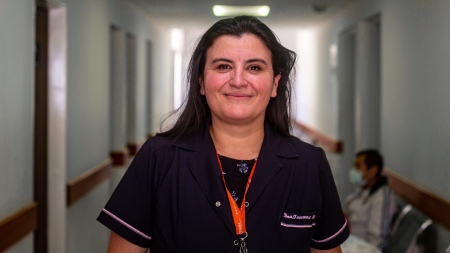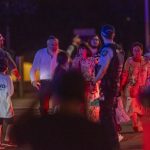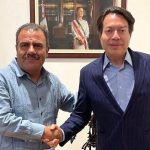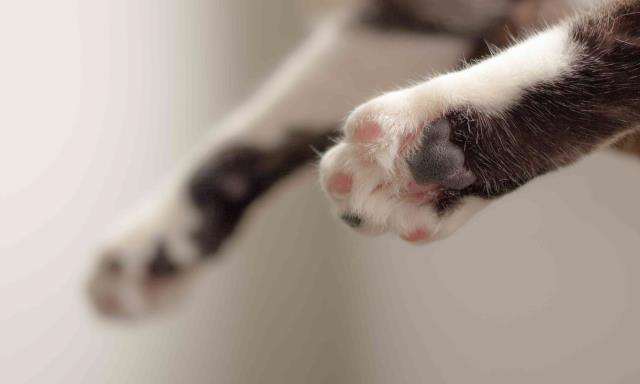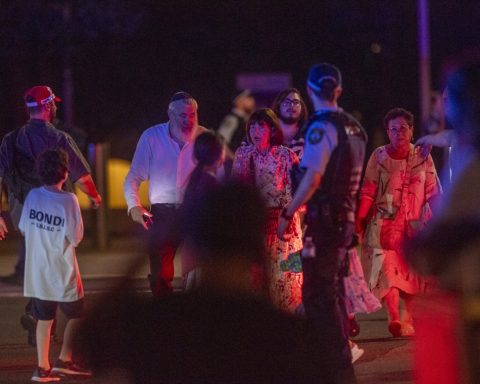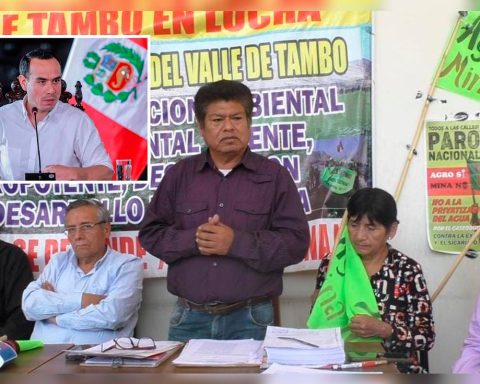researcher of ConicetDirector of the Hospital Translational Knowledge Unit (UCT-H) of the Arturo Oñativia Hospital Salta, where she is also director of the Immunology and Molecular Oncology LaboratoryToscano is passionate about his work and the possibility of solving “concrete problems”.
For this task he recently won the houssay award which he considered as “strong support for the work carried out by the entire research group that I lead and confirmation that we are moving on the right path”.
From her native Salta, where she returned after having trained in Buenos Aires with the world-renowned Argentine immunologist Gabriel Rabinovich and in other parts of the world such as London, the scientist spoke with Télam-Confiar about her history and the importance of translational medicine. to which he dedicates his life today.

How does science come into your life?
I am from Salta and I grew up until I was 18 in Salta. I am the youngest of three sisters and they had emigrated to Buenos Aires to pursue their respective university degrees.
When I had to choose my major, I was very divided between veterinary medicine, biology or any of the natural sciences. I started biology at the University of Buenos Aires and I was fascinated, I fell in love with biomedical research. When I was finishing I asked a professor if there was any young and thriving researcher with whom I could train in immunology, and Gabriel (Rabinovich) had just arrived from Córdoba and introduced it to me.
I was hooked right away and Gabriel was a whirlwind, so we worked a lot. We did a lot of work with Galectin (a protein that until then was quite unknown), and in fact my thesis in 2008 was on glycosylation of Th1, Th2 and Th17 lymphocytes, this is what sugar glycan coatings cells have that allow them to be or is not regulated by endogenous immunosuppressants (internal to the organism).

Why did you decide to return to Salta?
I continued working in Gabriel’s group, I moved from T lymphocytes to B lymphocytes and although I was very well I missed Salta, where I came every summer. I also began to feel that although I love basic research, I wanted my work to be more in contact with health people, that is, with the problems that can arise, for example, in a hospital.
I noticed that health had many demands and that they were not necessarily answered by the research in the institutes.
In research, I was getting deeper and deeper into cellular mechanisms but I wanted to get back to the surface and try to solve problems.
This, plus the nostalgia for my payments, led me to return to Salta in 2019.

How was this transition?
When I arrived at Oñativia I joined a Salta researcher named Luis Parada, who had trained in Sweden, Spain and the United States and had a very nice career as a geneticist; he passed away in june 2020 and it was a very big loss.
In 2019 the work was to get to know the people, the hospital, the issues it deals with because it is a hospital specializing in endocrinology and metabolism, recognize what type of patients, with what problems and identify what the needs were and what it could contribute.
There arose the need to set up a flow cytometry laboratory for oncohematological diagnosis, that is, malignant blood diseases such as leukemia.
At that time there was no laboratory like this in the entire province, that is to say that in Salta the hematologists sent the bone marrow or blood sample to Bahía Blanca or Buenos Aires.
So when the hospital found out that I had the experience and technical capacity to carry it out, they embarked on setting up that laboratory and by the end of 2019 we already had it installed, which was great luck because a few months later with the restrictions due to the pandemic, the province would not have been able to make diagnoses.
That was like a small example of how bringing someone from Science and Technology to a hospital allowed the hospital to have a new technical capacity. In a year we already had a taste of what translation was.

What is it like to do research in a hospital?
Within the framework of a hospital, the focus of biomedical research has to start from the problems that are demanded; For example, a doctor comes and tells you: I have some patients with such a disease who are doing well and others who are doing poorly, and I don’t know how to know which one will do well or not. This is already a concrete question.
From there, the work begins. One wonders what do we need to answer that question? Progression prognosis markers that are achieved by investigating the cases, looking for common patterns, and then this would make it possible to guide the treatments, etc…
How would you explain what Translational Health Research is?
Translational research is another head of doing research. We are used to basic biomedical research, which provides a lot of knowledge and is fundamental. Then we have clinical research, which are clinical trials, evaluation of new treatments, new diagnoses, descriptive trials, etc.

And then we have another area of research that is implementation, which is to see how a new drug is implemented, for example. It is a much less known and less financed area, but it is dedicated to something key because we can do a lot of new developments, but if they do not reach the population, they are in vain. So there is a very long journey from the understanding of the causes of a disease, the design of drugs, diagnoses or treatments, the evaluation of their effectiveness in a controlled clinical trial and their implementation in practice. All of this is translation, it is to think of the process from the laboratory to the people in an integral way. There was always the idea that basic research must be financed because the findings from there will reach the clinic and from the clinic they will arrive the patient as if it were a natural waterfall; but in reality there are large gaps and many factors make the flow neither efficient nor fast.
In this sense, the pandemic was a counterexample to what usually happened and shows how if one directs will, financing, pre-existing technological scientific capacity, human resources and an objective, this cascade works.

